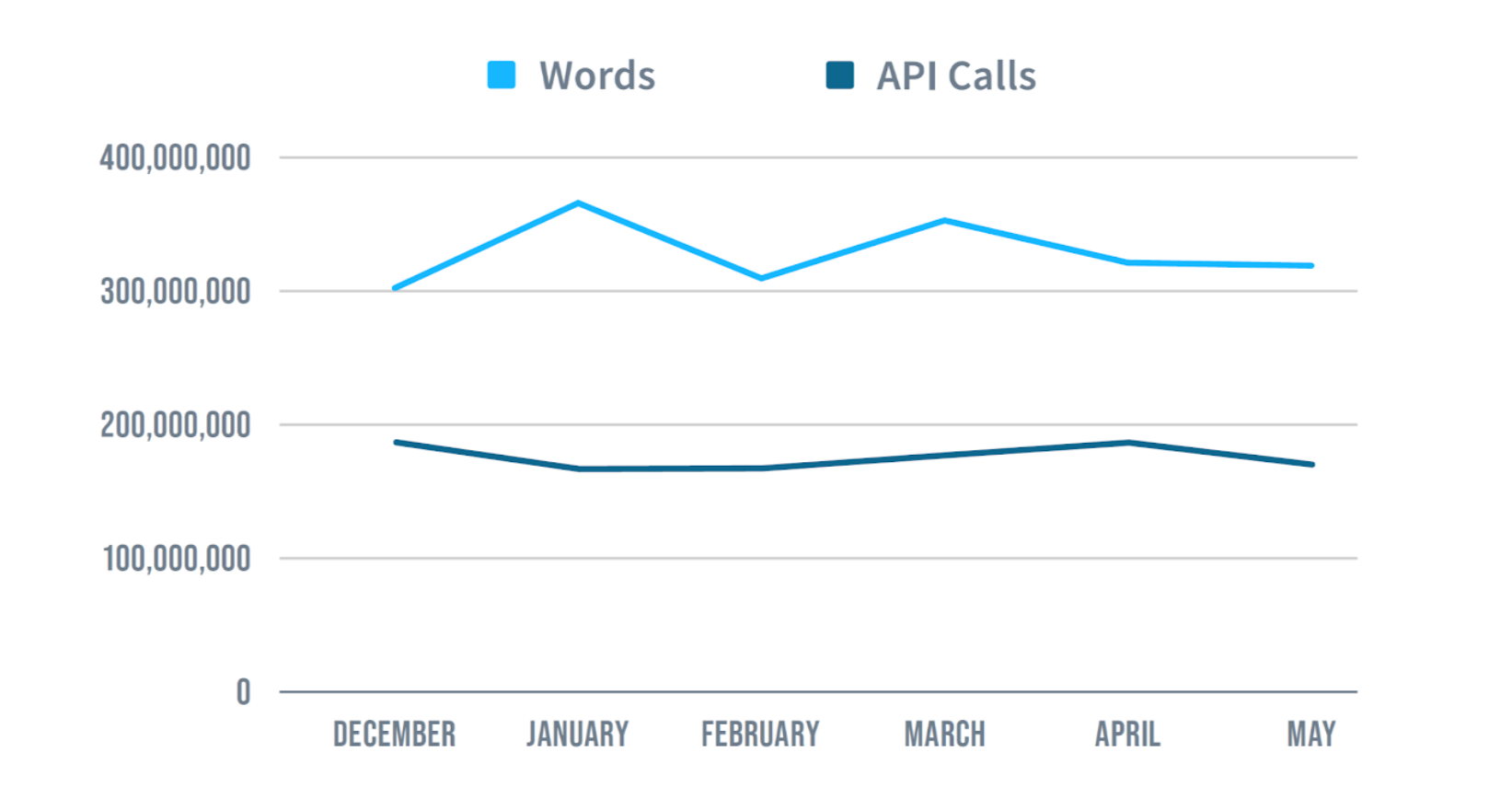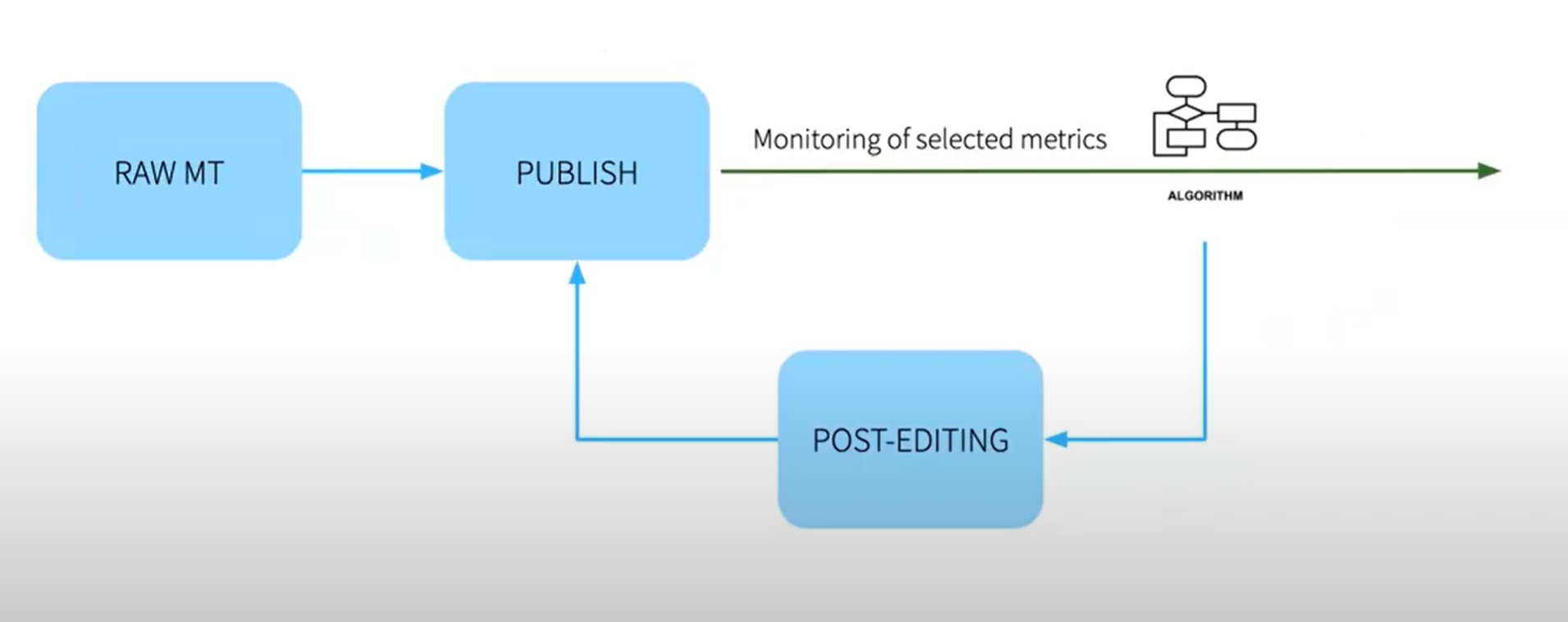
Blog
Machine Translation Report
What is the optimal MT Engine for you? Find out in the latest MT Report by Memsource.

With almost 1500 registrants, the latest Memsource Meetup was a huge success and packed with valuable information to help you streamline your localization processes. During our first event in April, we focused on maintaining business continuity during the COVID-19 pandemic and discussed the effect on the localization industry. We also shared strategies on how to safeguard your business and get through the pandemic with minimal impact.

The pandemic has had no noticeable effect on Memsource word volume and API calls
Now, although the global pandemic is far from over, businesses are starting to reopen and we’re facing a very different economic landscape. We wanted to think about the next step. How can you protect your business in the face of an imminent recession? The answer is efficiency. To remain competitive and deliver localized products faster, customers are looking for ways to integrate new systems and automate processes. From enlightening panel discussions and presentations to lively Q&A sessions, we’ve put together five key takeaways from the event.
When approaching an integration project:
1. Do your research
This may sound like a no-brainer, but it is extremely important to set clear goals and know what is required for the integration from all stakeholders. For Hristina Racheva, Head of Localization at Skyscanner, this includes understanding both your current and future needs for both your localization team and organization.
Here are some points to remember from our panelists:
- Gather all requirements from all stakeholders, i.e. the localization team, engineers, internal users, content team, etc.
- Prioritize the requirements and allow all stakeholders to rank their needs from most important to least important.
- If you’re working with an LSP, bring them into the process as soon as possible. As Jordi Macias, VP of Language Excellence at Lionbridge pointed out, LSPs will bring value to the project so bring them in early to leverage their expertise.
2. Don’t underestimate the importance of testing
While an out-of-the-box connector sounds like the perfect solution, you should test your integration to see how well it works with your internal process. As Hristina discovered, teams customize the use of their platforms, sometimes to the point where a ready-to-use connector no longer fits the team’s requirements. To remedy this, Localization Program Manager at Vistaprint, Alexander Ekhilevskiy, suggests thoroughly testing the connector in an environment that closely resembles the environment in which the connector will be used.
3. Find solid tools to work with
Olivier Libouban, VP of Product Development at Lingoport, pointed out the need to work with reliable tools. Look for partners who are built for scalability and have a reliable uptime. This is also an important factor when you are evaluating security requirements. Cloud-based platforms are built for security as files stay within the platforms. You also need to ensure the tools you use and your strategies are flexible. Changes will happen down the line and you need to be able to adapt quickly and easily.
Tip: Make sure to align or match terminology across platforms. A project in a TMS (translation management system) may be different from a project on other platforms.
4. Measure your ROI
There are many points to track and prove your return on investment. Tracking how much time you save and the reduction of manual operations is the most important factor. Jordi Macias, VP of Language Excellence at Lionbridge, recommends measuring the process from beginning to end—moment the author submits the content for translation to the moment it is published by the client.
Other data points to track:
- User satisfaction and stakeholder satisfaction
- Cost of integration vs effort spent on integration
- Error reduction
Meticulous tracking of the process before and after may be painful, but you’ll be able to show the true impact of an integration. Ensuring that you have a system that flows smoothly along all the moving parts will have a huge effect on your ROI.
5. Re-thinking the post-editing workflow
The localization industry has generally settled on the same localization workflow for both low and high-value content, that is, machine translation > post-editing > publishing. This flow works well for content that has a lot of business value, but for low-value content, it’s a waste of resources. If the content doesn’t have high business value, removing the post-editing step can help reduce cost significantly. To post-edit or not to post-edit, that is the question.
Martin Švestka, Chief Product Officer at Memsource, introduced a new strategy to ensure your translation resources are well spent. There are two main factors to consider: machine translation engine quality and the distinction between low and high-value content. Martin focused mainly on the latter but if you’re interested in the former, you can sign-up for our upcoming webinar on Memsource’s unique solution for getting the most out of machine translation.
To distinguish between high and low-value content, Martin demonstrated a new, innovative way of using analytics and data to identify which content assets bring in the most value to your business. And with this data, and a seamless integration with Memsource, new translation tasks are automatically created once the post-editing criteria, such as number of page views, are reached. The new workflow is demonstrated below.
 Workflow for BI-powered post-editing
Workflow for BI-powered post-editing
Automation can transform your localization workflow in a number of ways and integrations can save you both time and energy. If you missed the Meetup but want to delve deeper into automation you can watch the event recording here. You can also learn more about BI-powered post-editing at the Process Innovation Challenge at LocWorldWide42 later this month.



